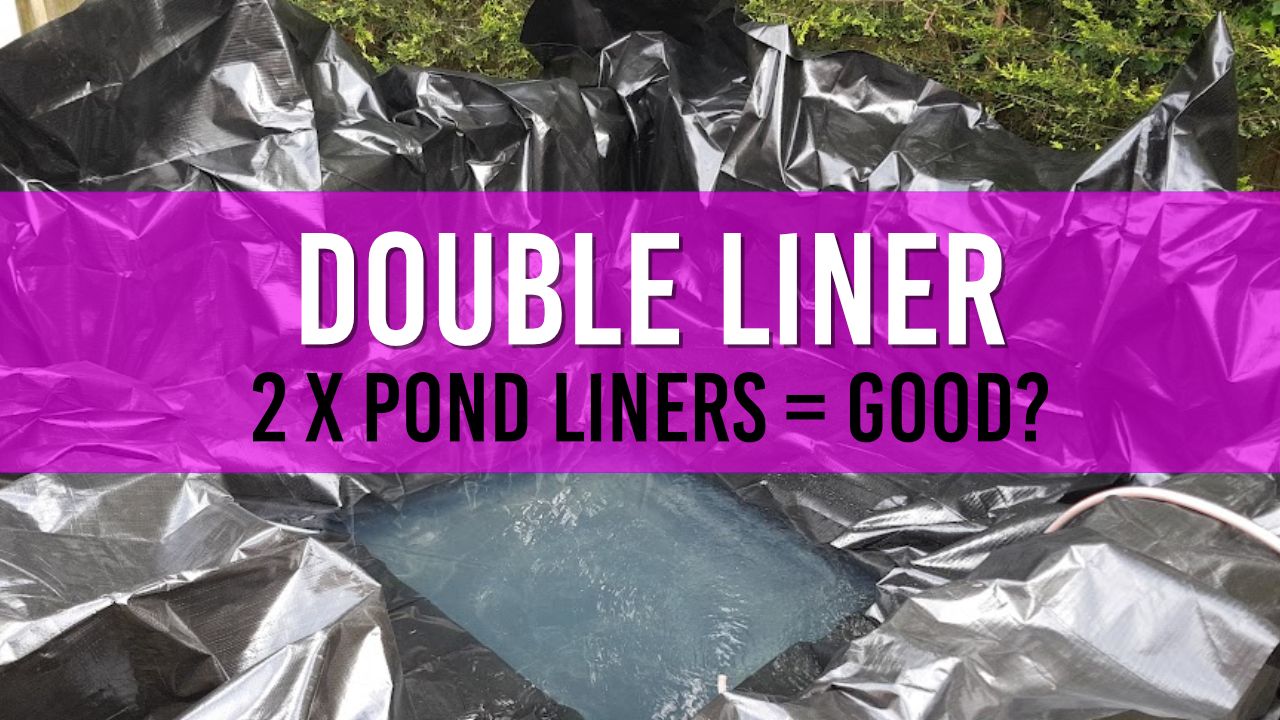Should I double layer my pond liner?
Double layering your pond liner can increase the lifespan of your pond whilst providing extra leak protection, however it may end up costing more when comparing with a higher quality single layer liner.

Table of Contents
As a pond owner, one of the most important decisions you will make is choosing the right pond liner. A pond liner is a waterproof barrier that prevents water loss and helps maintain the pond's structural integrity. Some pond owners may wonder if they should double layer their pond liner to enhance its durability and longevity. In this article, we will explore the advantages and disadvantages of double layering your pond liner and help you decide if it is a suitable option for your pond.
Advantages of Double Layering Your Pond Liner
- Increased Durability: A double-layered liner can potentially offer more resistance to punctures and tears, especially if you are using a thinner or less durable material for your pond liner. This additional layer can provide extra protection against damage from rocks, roots, and other sharp objects.
- Extended Lifespan: By doubling the layers, you may extend the life of your pond liner. Over time, exposure to sunlight, chemicals, and weather can cause the liner to degrade. A second layer can offer added protection and slow down the wear and tear process.
- Extra Leak Protection: In the unfortunate event of a puncture or tear in your pond liner, a second layer can act as a backup to prevent water loss. This extra layer can give you peace of mind, knowing that your pond is better protected against leaks.
Disadvantages of Double Layering Your Pond Liner
- Increased Cost: Purchasing and installing a second pond liner can be more expensive than opting for a single layer. This additional expense may not be worth it if the first liner is of high quality and properly installed.
- Difficulty in Identifying Leaks: If a leak occurs between the two layers, it can be challenging to identify and repair the issue. Water may become trapped between the layers, causing damage and making it difficult to locate the source of the leak.
- Potential for Uneven Settling: Double layering pond liners can result in uneven settling of the layers, causing folds and wrinkles. These irregularities can detract from the pond's aesthetic appeal and may harbor debris and algae, leading to poor water quality.
Alternatives to Double Layering Your Pond Liner
Instead of double layering your pond liner, you can consider the following alternatives:
- Choose a High-Quality Liner: Invest in a durable, high-quality pond liner made from materials such as EPDM or reinforced PVC. These materials offer excellent puncture resistance and longevity, reducing the need for a second layer.
- Properly Prepare the Pond Base: Before installing the pond liner, make sure to clear the area of rocks, roots, and other debris that may damage the liner. You can also lay down a protective underlay, such as geotextile fabric, to provide an extra cushion between the liner and the ground.
- Regular Maintenance and Inspection: Perform regular pond maintenance and inspect the liner for any signs of wear or damage. Address any issues promptly to prevent leaks and prolong the life of your pond liner.
Conclusion
Ultimately, whether to double layer your pond liner depends on your individual needs and preferences. If you are concerned about durability and leak protection, a double layer may be a viable option. However, investing in a high-quality liner, properly preparing the pond base, and performing regular maintenance can often provide sufficient protection without the need for a second layer.
If you decide that double layering your pond liner is the right choice for you, make sure to use compatible materials for both layers and take extra care during installation to prevent uneven settling and wrinkles.
Also, keep in mind that regular inspection and maintenance are still necessary to ensure the long-term health and beauty of your pond, regardless of the number of liner layers.

